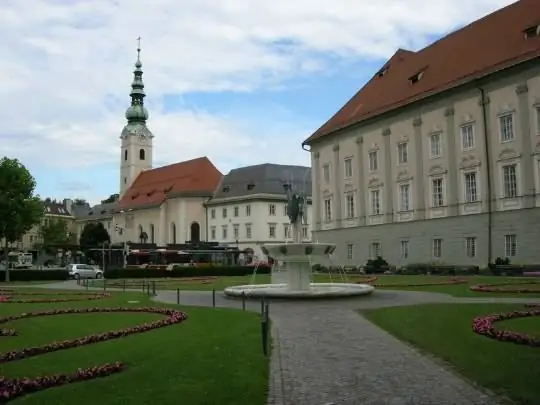
Description of the attraction
The Roman Catholic Church of the Holy Spirit in Klagenfurt was built before 1355, when the first mention of it is found in written sources, that is, at a time when Gothic reigned in architecture. As a result of numerous subsequent reconstructions, the temple of the Holy Spirit lost its Gothic appearance and acquired a magnificent baroque design. however, the interior of the temple still contains Gothic details. The western tower of the temple was crowned with an onion dome. The main entrance to the church is located on the south side. It is accessed by a double-pillared porch that was designed in 1800 in a classical manner. In 2014, the portal was restored according to the project of the architect Werner Hofmeister.
The only nave of the Church of the Holy Spirit along the perimeter is decorated with lunettes interspersed with pilasters. On the vault of the nave, two large paintings can be seen depicting the Nativity and the Ascension of the Lord. They were written by Joseph and August Weiter in 1886. The walls have frescoes depicting prophets and saints. On the columns, you can find six coats of arms belonging to famous patrons of the arts. One of the emblems presented is the coat of arms of Carinthia.
The lush, ornate main altar with columns and pilasters dates from 1776. The oval altarpiece depicts Saint Joseph with the Child. The two side altars were made at the end of the 18th century. They are dedicated to the Sacred Heart of Jesus and the Virgin Mary. The pulpit was made in 1776 in the Rococo style.
In the Church of the Holy Spirit there is a chapel of the Cross, located in the tower, where the altar is also installed. It was designed by Josef Ferdinand Fromiller.






